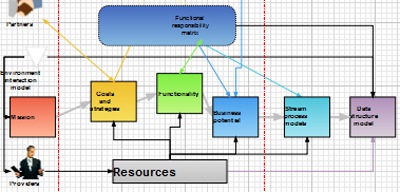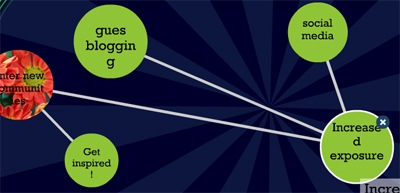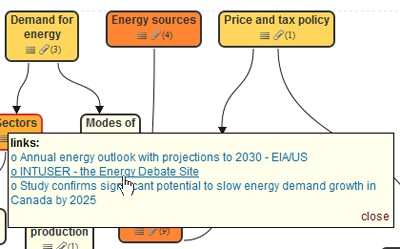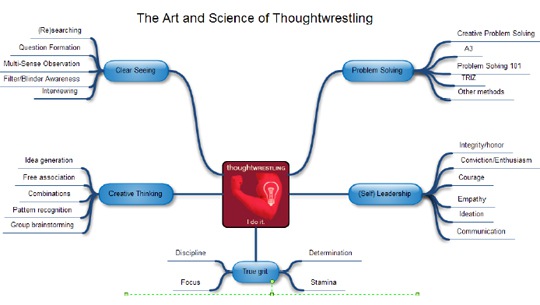What is Mind Mapping?
Mind Mapping means graphically representing words, ideas, concepts, tasks in the form of a diagram – it is thus outlining some structural knowledge around some core word or concept.
Mind maps are used to:
- Structure, and classify ideas and words (e.g. in keyword research)
- To visualize and ellaborate further on ideas (e.g. in writing and content brainstorming and research).
A Brief Look at Free Mind-Mapping Tools:
There are plenty of free web apps that let you create mind maps, this short overview looks only at those that:
- Offer something different
- Are free and fun.
| Core feature | Collaboration? | Sharing | Demo | |
| Flow Chart | Multi-user, multi-page support; drawing tools; Record/Playback your flowchart. | Live collaboration | Embed and/or export as an image | Playground |
 |
||||
| Think | Organize each idea as a thought. Each thought is then further divided into nodes. | No | Export / share as an image | Think -> tutorial |
 |
||||
| Gliffy (free account comes with unlimited number of public diagrams) | Powerful techy-oriented diagram creation tool | Yes | Embed and/or export as an image | Video |
 |
||||
| BBC’s Pinball | Fun, arcade-game-like brainstorming utility | No | Export / share as an image | |
 |
||||
| Glinkr | Attach links | No | Embed as iFrame, Import / Export as XML | Examples |
 |
||||
Can You Learn to Mind Map?
Yes, for sure. All you need is just start playing and you’ll find your own way to do that.
A great way to start and get inspired to is to get the copy of Mark Dykeman’s eBook called “Unstuck, Focused, Orgamized Using Mind Mapping“.
The book gives a reat rount-down of:
- Various ways to use mind maps to clear your mind and get unstuck;
- Examples of how actually people can get started with mind maps;
- Mind-mapping at home (using pen and pencil);
- Mind-mapping software;
- etc, etc.

Do you mind-map? Share your tips!




![AI Overviews: We Reverse-Engineered Them So You Don't Have To [+ What You Need To Do Next]](https://www.searchenginejournal.com/wp-content/uploads/2025/04/sidebar1x-455.png)